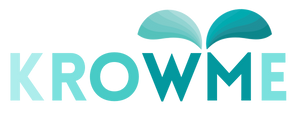What is employee engagement?
The term employee engagement relates to the level of an employee’s commitment and connection to an organisation.
Employee engagement is based on trust, integrity, two way commitment and communication between an organisation and its members.
What is an employee engagement action plan?
An employee engagement action plan outlines the process you need to take to solve issues identified via your employee feedback, to improve the overall employee engagement.
Here are the 8 Steps you need to take for a productive employee engagement action plan
1. Survey
First you need to know what your employees are actually thinking. The best way to gather data is via surveys. A free way to do so is via Google forms. Watch this video to see how I set up a NPS Survey for free using Google forms.
There are multiple types of surveys that you can set. However, some surveys may be more useful for you than others. Find out more about which survey(s) you should use to get feedback from your employees.
2. Review results
Once you have collected your data, it is time to review the results you have collected. From the results, you should be able to tell whether the overall sentiment is positive or negative.
To see all your results at a glance, you can copy your graphs that are generated from your google form results (if google forms is what you are using to collect surveys), and paste these graphs on a google slides document.
You can consider pasting them on a google docs document but my preference is google slides as i find it easier and more flexible to use when it comes to copying and pasting graphs and images.
3. Prioritise
With all the results you have collected, things can get overwhelming. Hence, it is important to prioritise. Pick 1-3 issues that you would like to tackle as a team first. I suggest that you first tackle the issues that are quickest to fix and easiest to measure.
A great way to ensure that your stick with the issues that you are prioritising is to display them all out in an excel or google sheet.
4. Brainstorm solutions
Now it is the time to brainstorm how to resolve the issues that you have prioritised. For example, for a good onboarding process, perhaps you can create an employee onboarding booklet, an employee onboarding worksheet, and assign someone to be an onboarding ally.
5. Commit to action
Once you have brainstormed the solutions, you will need to think about the action steps you can take and the timeline required for all your solutions.
Compare the timeline and difficulty of the various solutions that you have. I suggest that you start with the solution that is the easiest to implement. Getting the first task completed as soon as possible can help keep you motivated, which is important if you want to continue to build on this momentum of improving your company’s employee engagement.
6. Track the progress
Have meetings at least once every 1-2 weeks to check on the status of each issue. During such meetings, it is good to present concrete data on how the situation has improved. To make the data more digestible, you can use interesting visuals and graphs to present the data.
Be open to tweaking your timeline, survey questions and other means that you take to get your results.
7. Communicate the outcome
Share what you have improved with the rest of your company. This will show your colleagues that you have been taking action and that you care about their involvement as well. You can present the outcome using google slides, powerpoint slides or even via EDMs.
8. Start process again
Now that you have taken the steps to improve the 1-3 issues that you have prioritised, it is time to go back to the drawing board again – you can either further improve on these 1-3 issues or proceed with 1-3 other issues that you have identified.



Leave a Reply